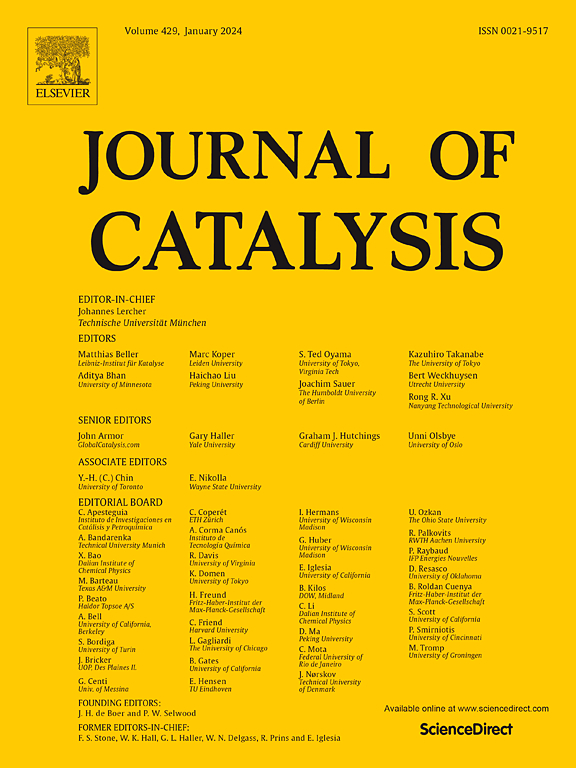Cobalt-catalyzed transfer hydrogenation of nitroarenes to arylhydroxylamines with NH3BH3: Scope and mechanism
IF 6.5
1区 化学
Q2 CHEMISTRY, PHYSICAL
引用次数: 0
Abstract
A novel cobalt-catalyzed transfer hydrogenation of nitroarenes to arylhydroxylamines using ammonia borane (NH3BH3) in methanol has been developed. The cobalt catalyst exhibits good selectivity without producing over-reduced by-products. Density functional theory (DFT) calculations and control experiments provide valuable insights into the reaction mechanism, revealing the N–H moiety of NH3BH3 as a key participant in nitroarene reduction. Moreover, DFT calculations reveal that selective control is achieved via the unique square-pyramidal coordination of the cobalt complex with NH3BH3 and hydroxylamine. This coordination ensures that the reduction of nitrobenzene halts at the hydroxylamine stage, enabling the selective reduction of nitrobenzene to hydroxylamine. Moreover, methanol is indirectly involved in the reaction and does not provide hydrogen atoms directly for nitroarene reduction, which differs from the classical solvent-mediated protonolysis mechanism. This study presents a novel and straightforward method for synthesizing arylhydroxylamines.

钴催化硝基芳烃NH3BH3转移加氢制芳基羟胺:范围和机理
研究了以氨硼烷(NH3BH3)为催化剂,钴催化硝基芳烃在甲醇中转移加氢制芳基羟胺的新方法。钴催化剂具有良好的选择性,不会产生过还原副产物。密度泛函理论(DFT)计算和控制实验为反应机理提供了有价值的见解,揭示了NH3BH3的N-H部分是硝基芳烃还原的关键参与者。此外,DFT计算表明,选择性控制是通过钴配合物与NH3BH3和羟胺的独特的方锥体配位来实现的。这种协调确保硝基苯的还原在羟胺阶段停止,使硝基苯选择性还原为羟胺。此外,甲醇间接参与反应,不直接为硝基芳烃还原提供氢原子,这与经典的溶剂介导的质子分解机制不同。本研究提出了一种新颖而直接的合成芳基羟胺的方法。
本文章由计算机程序翻译,如有差异,请以英文原文为准。
求助全文
约1分钟内获得全文
求助全文
来源期刊

Journal of Catalysis
工程技术-工程:化工
CiteScore
12.30
自引率
5.50%
发文量
447
审稿时长
31 days
期刊介绍:
The Journal of Catalysis publishes scholarly articles on both heterogeneous and homogeneous catalysis, covering a wide range of chemical transformations. These include various types of catalysis, such as those mediated by photons, plasmons, and electrons. The focus of the studies is to understand the relationship between catalytic function and the underlying chemical properties of surfaces and metal complexes.
The articles in the journal offer innovative concepts and explore the synthesis and kinetics of inorganic solids and homogeneous complexes. Furthermore, they discuss spectroscopic techniques for characterizing catalysts, investigate the interaction of probes and reacting species with catalysts, and employ theoretical methods.
The research presented in the journal should have direct relevance to the field of catalytic processes, addressing either fundamental aspects or applications of catalysis.
 求助内容:
求助内容: 应助结果提醒方式:
应助结果提醒方式:


